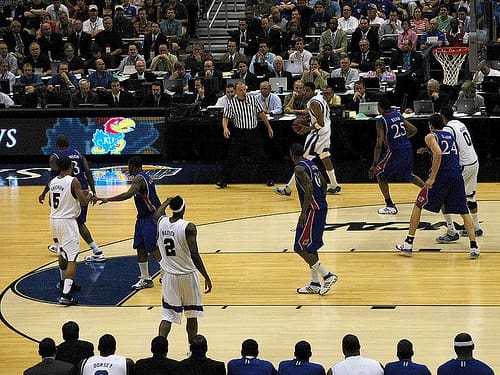An Ogden, Utah university will save thousands of dollars as a result of its recent installation of General Electric's Albeo LED High Bay lighting in its recreation center.
The World Interior Design Network reported that Weber State University's Energy & Sustainability Office determined, after conducting a comprehensive energy audit of the WSU campus, that the high-intensity discharge (HID) lighting utilized by the Dee Events Center was chewing up electricity.
What was replaced?
The conclusion of the audit led to university officials replacing exactly 100 HID fixtures with 80 of the GE Albeo ABHX-Series LED fixtures. Each LED bulb, unlike the HID bulbs, gives the university the ability to generate special effects during sporting or orientation events. This feature is made possible by the instantaneous nature of LEDs. Opposed to the HID fixtures, that require a "warming up period," where they buzz and flicker – the new LED fixtures illuminate in an instant. In addition, each LED bulb produces more than 200 foot candles, or units of light that are projected onto a surface. That figure is nearly double the requirements established by the NCAA for its authorized courts.
The lights can also be dimmed – just like lights in a residential setting – in nine separate "zones" throughout the arena. In addition to reducing costs associated with maintenance and training personnel, the LED installation will save the university an impressive $40,000 every year. The reason? The Albeo ABHX-Series fixtures claim to use 70 percent less electricity than conventional lighting solutions.
"Month after month when the electric bill came for the Dee Events Center, all we could do was cringe and pay," said Jacob Cain, Weber State University Energy & Sustainability Manager. "The new high-bay lighting gives us brighter light with fewer fixtures, and we spend less money on energy. Now that's something we welcome and our teams and fans can appreciate."
The history of LEDs and sports
According to LEDs Magazine, the implementation of the indoor LED lighting in the WSU stadium setting may be the most significant use of such LED products to light a playing surface. Sports venues have been, by far, the last major niche markets to take advantage of LEDs, but that is a changing story. LED technology is becoming more advanced, and the size and light output by systems such as the Albeo ABHX-Series are outperforming traditional luminaires designed for industrial settings. Plus, in the event of a power outage, an LED system won't have any restrike problems that take time and delay the sporting event.





